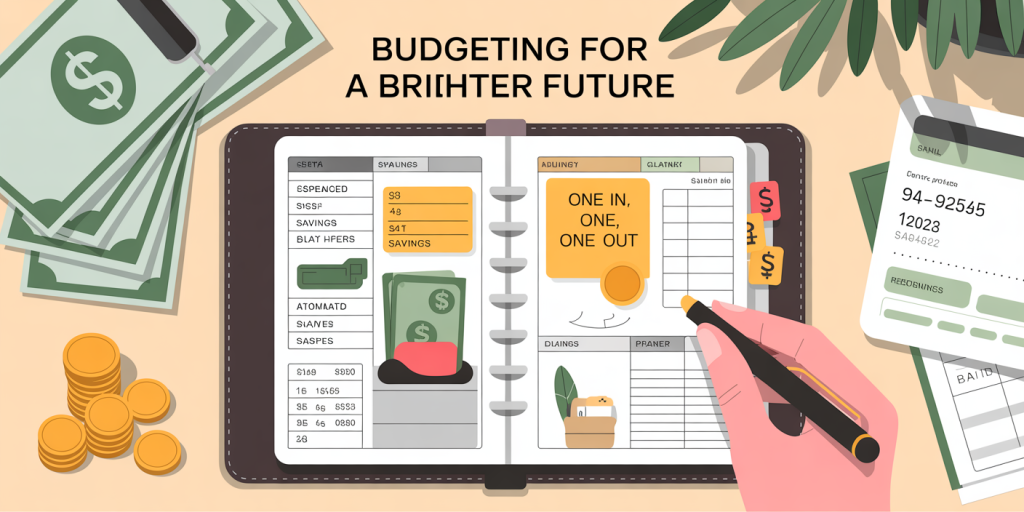Minimalist Finances: Spend Less, Save More, Live Better
Anúncios
In today’s fast-paced, consumer-driven world, managing finances effectively is more crucial than ever. Amid rising debts, uncertainty in economic stability, and an overwhelming array of spending options, minimalist finances present a refreshing and practical approach. Minimalist finances emphasize intentional spending, rigorous saving, and mindful consumption to achieve financial independence and a better quality of life. This article explores how adopting minimalist financial habits can empower individuals to spend less, save more, and ultimately live a more fulfilling life.

The Foundation of Minimalist Finances: Why Less Is More
Anúncios
Minimalism, at its core, is about valuing quality over quantity, seeking purpose in possessions and expenditures. When applied to finances, this philosophy shifts the focus from acquiring wealth to optimizing it. According to the Federal Reserve’s 2023 Consumer Financial Survey, nearly 40% of Americans admit to living paycheck to paycheck, highlighting a need for smarter financial habits.
For example, consider Jane, a 32-year-old graphic designer who drastically cut her monthly discretionary spending by $500 simply by canceling unused subscriptions and limiting impulse purchases. Instead of buying multiple trendy outfits each month, she invests in three quality pieces that last for years. This deliberate approach to consumption illustrates how minimalist finances can reduce stress, increase savings, and promote mindful living.
Implementing minimalist finance principles relies on developing a clear understanding of needs versus wants and learning to say no to unnecessary spending. In practical terms, this means tracking expenses rigorously, prioritizing essential costs, and automating savings, all while consciously resisting the lure of modern consumerism.
Practical Strategies to Spend Less Without Sacrificing Quality
One effective route to spending less is using a zero-based budgeting method, where every dollar of income is assigned a purpose before the month begins. This ensures no funds are left to waste. A study by the National Endowment for Financial Education found that people using structured budgets overcome spending pitfalls 30% more effectively than those relying on intuition.
Another potent approach is the “one in, one out” rule — for every new item purchased, an old item is donated or sold. This keeps possessions minimal, avoids clutter, and indirectly controls spending habits. For instance, a real-life case is Brian, who committed to this rule and found his miscellaneous spending decreased by 20% within six months.

Comparison Table: Spending Reduction Tactics
| Strategy | Description | Impact on Spending | Example |
|---|---|---|---|
| Zero-Based Budgeting | Allocate every dollar before spending | High | Keeps finances planned |
| Subscription Audit | Cancel unnecessary monthly services | Moderate to High | Saves $50+ monthly |
| One In, One Out Rule | Exchange new item for old item | Moderate | Reduced impulse buys |
| Bulk Buying | Purchase essentials in larger quantities | Moderate | Saves up to 15% on groceries |
Bulk buying, particularly for household essentials, also contributes meaningfully to savings when done wisely. This strategy minimizes price per unit, reduces shopping frequency, and leverages discounts, particularly for non-perishable goods.
By integrating these methods, individuals can drastically reduce expenses while maintaining or even enhancing their lifestyle through careful choice and planning.
Save More by Automating and Prioritizing Savings Goals
Saving money consistently is often the hardest financial task, yet it’s vital to building wealth and reducing anxiety about the future. Automation is a powerful tool here. According to a 2022 study by the Consumer Financial Protection Bureau, automatic transfers to savings accounts increase the likelihood of saving success by 35%.
Consider the case of Maria, a single mother who set up automatic monthly transfers of 10% of her paycheck into a high-yield savings account. Over two years, she accumulated a $7,000 emergency fund without feeling the loss in daily spending power.
Prioritizing savings goals is essential for long-term financial health. Goals might include emergency funds, retirement accounts, vacation plans, or education. Hierarchizing these goals helps allocate funds effectively and ensures that crucial financial security measures take precedence.
Saving Strategies and Their Outcome
| Savings Strategy | Description | Potential Outcome | Ideal For |
|---|---|---|---|
| Automatic Transfers | Scheduled transfer of funds to savings | Builds habit, low effort | Beginners, busy professionals |
| Goal-Oriented Saving | allocating funds based on goal priority | Targets specific needs effectively | Anyone with clear savings goals |
| Incremental Increase Savings | Gradual increase in saving amounts | Builds saving without strain | Those new to saving habits |
Combining these approaches reinforces the discipline to save while ensuring individual priorities are met, fostering long-term financial resilience.
Mindful Spending: Fostering Contentment and Financial Control
Minimalist finances are not just about cutting costs but also cultivating contentment and awareness around money. This mindful approach shifts the relationship from impulsivity to intentionality, encouraging spending that aligns with personal values.
Research from Stanford University in 2023 found that mindful spending correlates with higher reported life satisfaction and reduced financial stress. For example, by buying experiences rather than material goods, a person may find greater joy and long-lasting memories without the financial burden.
A practical example involves Mark and Lisa, a married couple who decided to reduce dining out and instead invested in cooking classes. The classes enhanced their enjoyment of home-cooked meals and reduced monthly dining expenses by about 40%. This shift not only saved money but also strengthened their relationship and lifestyle satisfaction.

Mindful spending means questioning purchases: Does this add value to my life? Will I use it often? Can this be borrowed instead? Such questions can drastically shape spending habits toward more meaningful and sustainable consumption.
Comparing Traditional and Minimalist Financial Approaches
Understanding the contrast between conventional and minimalist financial management can highlight the benefits of minimalism. Traditional methods often encourage maximizing income and spending to fuel consumption, while minimalist finances focus on reduction, simplicity, and longevity.
| Aspect | Traditional Approach | Minimalist Approach |
|---|---|---|
| Spending | Higher, often impulsive or status-driven | Controlled, intentional, needs-focused |
| Saving | Often irregular or secondary | Prioritized, automated, goal-driven |
| Consumption | Accumulate many items for diversity | Minimal possessions, high quality |
| Financial Stress | Higher due to debt and overspending | Lower due to control and simplicity |
| Lifestyle Impact | Sometimes cluttered and hectic | Simple, focused, fulfilling |
Statistically, minimalist financial habits tend to result in lower debt rates and higher savings balances. The U.S. Bureau of Economic Analysis notes a 25% higher average savings rate among individuals who self-identify as minimalists compared to the general population.
The Future of Minimalist Finances: Trends and Opportunities
As awareness of sustainability, mental health, and responsible consumption grows, minimalist finances are likely to become even more mainstream. Digital tools such as budgeting apps, AI-driven financial advisors, and online minimalist communities are making it easier than ever to adopt these lifestyle changes.
In addition, shifts in consumer behavior toward experiences, secondhand markets, and sustainable products enhance minimalist financial goals. For example, platforms like ThredUp and Gazelle promote circular economies by enabling buying and selling used goods at affordable prices.
Going forward, minimalist finances may intersect deeply with environmental stewardship, social responsibility, and technological innovation. Policymakers and financial institutions are starting to recognize these trends, recommending more personalized and holistic financial planning models.
In summary, embracing minimalist finances offers an empowering path to spend less, save more, and live better. By prioritizing intentionality, discipline, and mindfulness, individuals can not only improve their financial stability but also enhance their overall well-being in a complex economic world.
